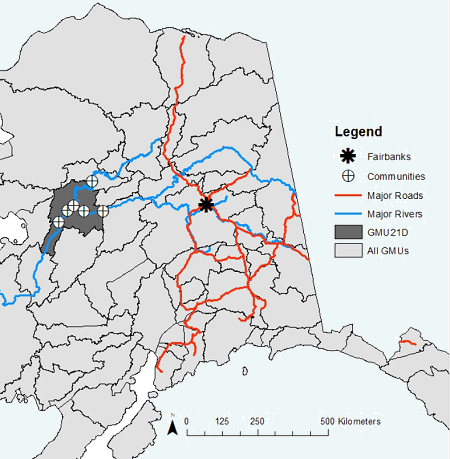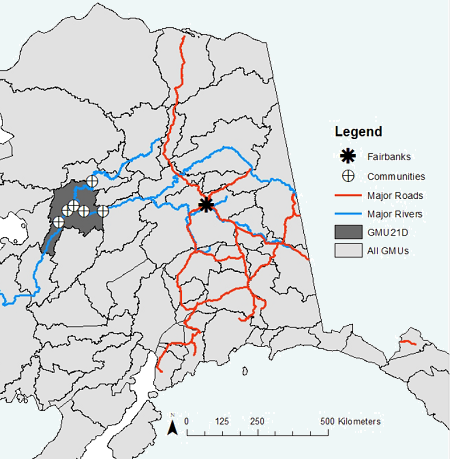ABoVE: Environmental Conditions During Fall Moose Hunting Seasons, Alaska, 2000-2016
This dataset from the Arctic-Boreal Vulnerability Experiment (ABoVE) provides daily and annual air temperature, river water level, and leaf drop dates coincident with the moose (Alces alces) hunting season (September) for the area surrounding the rural communities of Nulato, Koyukuk, Kaltag, Galena, Ruby, Huslia, and Hughes in interior Alaska, USA, over the period 2000-2016. The main objective of the study was to assess how the environmental conditions impacted the success of hunters who rely on moose as a subsistence resource.
ABoVE is a NASA Terrestrial Ecology Program field campaign conducted in Alaska and western Canada between 2016 and 2021. Research for ABoVE links field-based, process-level studies with geospatial data products derived from airborne and satellite sensors, providing a foundation for improving the analysis and modeling capabilities needed to understand and predict ecosystem responses and societal implications.
See all ORNL DAAC data from ABoVE.
Data Citation: Hasbrouck, T., T.J. Brinkman, G. Stout, K. Kielland, and E. Trochim. 2019. ABoVE: Environmental Conditions During Fall Moose Hunting Seasons, Alaska, 2000-2016. ORNL DAAC, Oak Ridge, Tennessee, USA. https://doi.org/10.3334/ORNLDAAC/1739
Data Center: ORNL DAAC
Sponsor: EOSDIS


